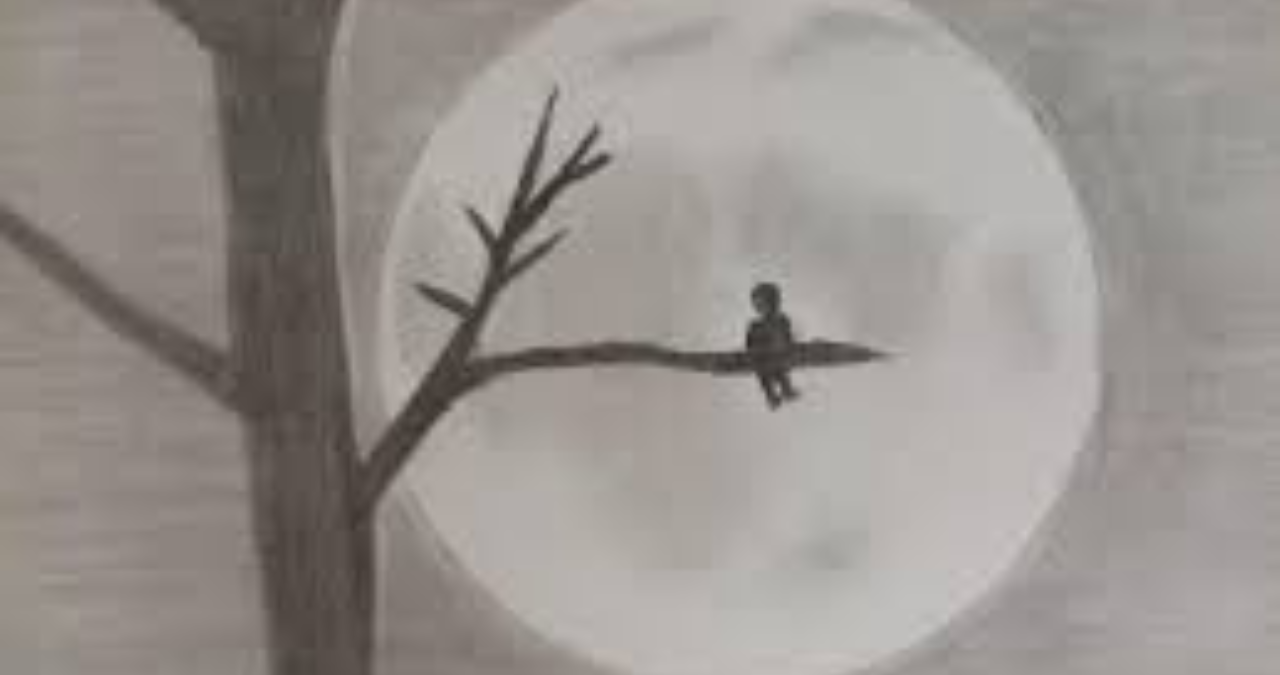Art can seem intimidating at first, but “easy drawings” provide the perfect gateway into the creative world. Whether you’re a complete beginner or someone looking to reignite your artistic side, starting with simple drawings can be both fun and rewarding. The beauty of easy drawings lies in their simplicity. They’re not about perfection or elaborate details but about expression and practice. So, let’s explore how you can immerse yourself in this creative journey.
Why Easy Drawings Are the Perfect Starting Point
Diving into art can feel overwhelming, especially when faced with complex pieces that take hours or even days to complete. Easy drawings, however, eliminate that pressure. They’re quick, approachable, and accessible to anyone regardless of age or skill level. This simplicity allows you to focus on the basics—shapes, lines, and shading—without getting bogged down by intricate techniques.
Starting with easy drawings also builds confidence. Small successes can motivate you to try more challenging projects over time. It’s a stepping stone that allows you to grow at your own pace while keeping things lighthearted and enjoyable. Plus, it’s a great way to learn art fundamentals, like understanding proportions or how light interacts with objects, without fearing failure.
Beyond skill-building, easy drawings are also therapeutic. Sketching, even simple doodles, can calm your mind and offer a break from daily stresses. Easy drawings provide a creative outlet that fits effortlessly into your routine, whether it’s a quick sketch during lunch or an hour spent on a relaxing evening.
Tools You Need for Easy Drawings
One of the best things about easy drawings is that you don’t need expensive or fancy tools. All you need is a pencil and some paper. A standard HB pencil works perfectly for most sketches, as it’s versatile and allows for both light and dark lines. If you want to experiment further, you can explore options like colored pencils, fine liners, or markers to add flair to your creations.
A good eraser is also essential, not because mistakes are bad, but because erasing helps refine your work. Art is a process, and making adjustments is part of that journey. Additionally, a sketchbook is a great investment for keeping all your drawings in one place. It’s incredibly satisfying to flip through and see how much you’ve improved over time.
While digital tools like tablets and styluses are popular among modern artists, they’re not a necessity for beginners. Starting with traditional mediums allows you to understand the basics of drawing without relying on technology. Once you’re comfortable, you can always transition to digital platforms for added flexibility.
Simple Shapes: The Foundation of Easy Drawings
Everything in art starts with basic shapes. Circles, squares, triangles, and ovals form the foundation of nearly all drawings. For instance, a simple cartoon face begins with a circle, while a house can be broken down into a square and a triangle. Recognizing these shapes in everyday objects simplifies the drawing process and makes it less intimidating.
Practicing basic shapes is a fantastic exercise for beginners. Start by drawing circles—they don’t have to be perfect. Then move on to other shapes, combining them to create objects like a snowman (two circles stacked) or a tree (a triangle on top of a rectangle). This practice not only helps you understand proportions but also improves your hand coordination and control.
As you gain confidence, you can experiment with overlapping shapes or adding details. For example, turning a simple circle into a cute cat face by adding triangular ears and whiskers. This method of building from simple shapes to more detailed drawings keeps things manageable while encouraging creativity.
Drawing Inspiration from Nature
Nature is an endless source of inspiration for easy drawings. From flowers and trees to animals and landscapes, there’s so much you can explore. The best part is that nature’s beauty doesn’t require intricate detail to shine. A simple outline of a leaf or a basic sketch of a bird can capture the essence of the subject.
To start, try drawing something as simple as a sunflower. Begin with a circle for the center, then add elongated oval shapes around it to create petals. You can enhance it by adding small lines in the center to mimic seeds or drawing a stem and leaves. Similarly, sketching a tree can be as easy as combining a large oval for the foliage and a rectangle for the trunk.
Animals are another fun subject. A basic fish, for example, can start with an oval for the body and a triangle for the tail. Add a circle for the eye and a curved line for the mouth, and you’ve got yourself a cheerful aquatic friend. The possibilities are endless, and the more you observe nature, the more ideas you’ll discover for your easy drawings.
Exploring Patterns and Doodles
Doodling is one of the most relaxed forms of art, and it’s a fantastic way to practice easy drawings. Patterns like swirls, zigzags, and dots are not only fun to draw but also visually appealing. You don’t need a specific subject in mind—just let your pen flow and see where it takes you.
Mandala art is a great example of how simple patterns can come together to create something stunning. Start with a circle, then add concentric designs using lines, shapes, and dots. The repetitive nature of mandalas can be incredibly meditative, making it a perfect choice for unwinding.
Doodling also allows for a lot of creativity. You can combine random shapes, add faces to objects, or fill an entire page with abstract designs. The key is to let go of expectations and enjoy the process. Over time, you’ll develop a unique style that reflects your personality and mood.
Mastering Cartoon and Character Drawing
Cartoon characters are a staple of easy drawings, and they’re loved by both kids and adults. Their exaggerated features and playful expressions make them fun to create and perfect for beginners. Whether it’s a smiling sun or a goofy monster, cartoons allow you to experiment with creativity and storytelling.
Start by sketching a simple character like a stick figure. Add a round head, oval body, and lines for the arms and legs. From there, you can customize the character by adding facial features, clothes, or props. For instance, a stick figure can transform into a superhero with a cape and mask or a chef with a hat and apron.
If you’re a fan of animated shows or movies, try replicating your favorite characters in your style. Focus on capturing their defining traits, like big eyes or quirky hairstyles, without worrying about perfect proportions. Cartoon drawing is all about having fun and letting your imagination run wild.
Shading and Adding Depth to Easy Drawings
Once you’re comfortable with basic outlines, shading is a great way to add depth and dimension to your easy drawings. Shading involves creating gradients of light and dark to mimic how light interacts with objects. It’s a simple technique that can make your sketches look more polished and professional.
Start with hatching, which involves drawing closely spaced parallel lines to create shadows. Cross-hatching, where you layer lines in different directions, adds even more depth. You can also experiment with blending by gently smudging pencil marks to create soft gradients. Practice shading simple objects like spheres or cubes to understand how light works.
Adding shadows and highlights brings life to your drawings. For example, a simple apple sketch can look much more realistic with a shaded underside and a bright spot to indicate light reflection. Shading doesn’t have to be complicated; even subtle touches can make a big difference.
The Joy of Drawing Everyday Objects
Everyday objects are excellent subjects for easy drawings. From a coffee mug to a pair of glasses, these familiar items offer endless opportunities to practice and improve. What makes them ideal is their accessibility—you don’t have to look far to find inspiration.
Begin with simple items like a spoon or a book. Observe their shape, size, and details, and translate them onto paper using basic outlines. As you practice, try adding more elements, like shadows or textures, to make your drawings more interesting. The key is to focus on observation and translate what you see into lines and shapes.
Drawing everyday objects also helps you appreciate the beauty in the mundane. A teapot or a chair might seem ordinary, but capturing them on paper can reveal their unique characteristics. Plus, it’s a fun way to document your surroundings and create a visual diary of your day-to-day life.
Encouraging Creativity with Easy Drawing Prompts
If you ever find yourself stuck or unsure of what to draw, prompts can be a great way to spark creativity. A drawing prompt is simply an idea or theme to get you started. For instance, you could challenge yourself to draw something related to “happiness” or sketch your favorite food.
Prompts can also be specific, like drawing a magical creature or designing a new type of flower. The goal is to push your imagination and explore new ideas. You can find prompts online, in art books, or even come up with your own. They’re perfect for getting out of a creative rut and discovering new directions for your art.
Collaborating with friends or joining online communities is another great way to use prompts. Sharing your interpretations and seeing how others tackle the same idea can be incredibly inspiring. It’s a reminder that there’s no right or wrong in art—just endless possibilities.
Building a Habit of Drawing Every Day
Consistency is key when it comes to improving your drawing skills. Making time for art every day, even if it’s just a few minutes, can lead to noticeable progress over time. Easy drawings are perfect for daily practice because they’re quick, simple, and don’t require a huge commitment.
Create a routine that works for you, whether it’s sketching during your morning coffee or winding down with a doodle before bed. Set up a small, dedicated space for your art supplies so you can draw whenever inspiration strikes. The more you practice, the more confident and skilled you’ll become.
A great way to stay motivated is to track your progress. Keep your drawings in a sketchbook or take photos to document your journey. Looking back at your older work can be incredibly satisfying and a reminder of how far you’ve come. Drawing daily isn’t just about improvement—it’s about making creativity a joyful part of your everyday life.
The Therapeutic Benefits of Easy Drawings
Art has long been celebrated for its therapeutic benefits, and easy drawings are no exception. The act of sketching can reduce stress, improve focus, and boost overall well-being. It’s a way to channel your thoughts and emotions into something tangible, providing a sense of accomplishment and peace.
Unlike more complex art forms, easy drawings don’t demand intense concentration or technical skill. This makes them ideal for unwinding after a long day or taking a mental break. The repetitive motions of drawing patterns or simple shapes can be meditative, helping you stay present and grounded.
Moreover, sharing your drawings with others can create a sense of connection and community. Whether you post your art online or show it to a friend, the positive feedback and encouragement you receive can be incredibly uplifting. Art is a universal language, and easy drawings allow everyone to participate in its joys.
Taking the First Step on Your Artistic Journey
Starting your artistic journey with easy drawings is a decision you won’t regret. It’s a low-pressure, enjoyable way to explore your creativity and develop your skills. Remember, there’s no right or wrong in art—only your unique perspective and expression.
So grab a pencil, find some inspiration, and start sketching. Whether it’s a flower, a cartoon character, or just a random doodle, every drawing is a step toward discovering your artistic voice. Enjoy the process, embrace imperfections, and most importantly, have fun. Your journey with easy drawings is just beginning, and the possibilities are endless.

